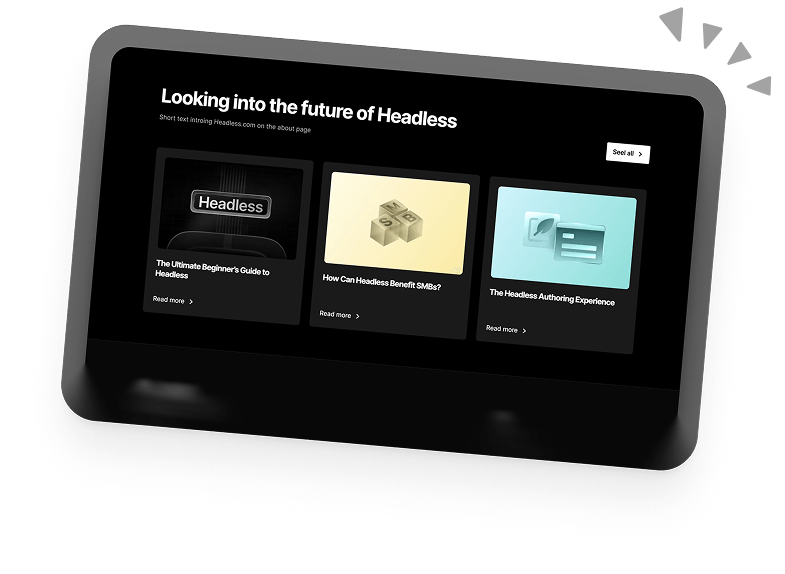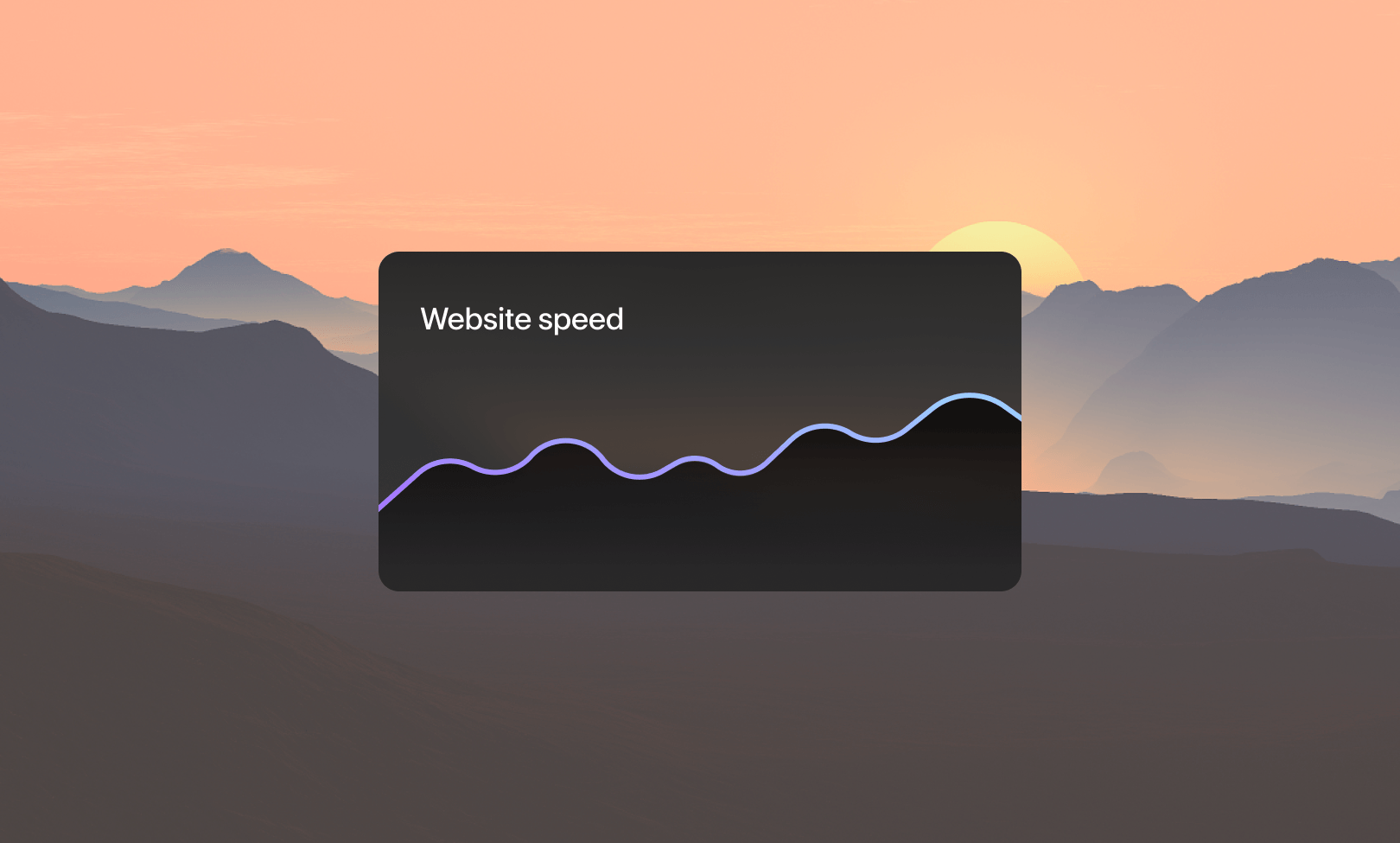7 Ways To Improve WordPress Site Speed (Without Using Plugins)
Speeding up your WordPress website makes for a vastly better user experience. And since user experience factors into your SEO ranking, you’ll do more than just reduce your bounce rate. After all, a fast website is a healthy website.
Fortunately, there are plenty of ways you can tweak your WordPress site to hit terminal velocity on those load times and stop feeling depressed every time you check your page speed insights.
This post will serve as an overview of how to fix some of the most common causes of slow loading speeds in WordPress with a list of nifty tips and tricks to optimise your WordPress site speed, ranging from simple changes to slightly more complex ones.
Keep reading to find out how you can optimise your site speed and eliminate any performance issues that are holding you back.
1. Optimise Images
Being larger-than-your-average-file, images are one of the most common culprits when it comes to slow WordPress sites. Loading hefty pictures will put a ton of strain on your server, drastically impacting performance.
Luckily, they’re also one of the simplest issues to fix.
All you need to do is make your image as small (in pixels and bytes) as possible without ruining the quality. You can do this by simply making your image smaller. This can be done easily with most image editing software. We also recommend using JPEG format for all your images as it automatically compresses your pictures without affecting quality.
2. Plugin Management
Listen, we love plugins too. But they can still be a significant drain on your resources. Unfortunately, you can have too much of a good thing.
Even if you’re not actively using a plugin, it can still be slowing you down. To check if old plugins are dragging your speed down, delete any plugins you don’t need anymore. Then check performance before and after you’ve deleted them to see how it affects your site’s speed.
Another thing you should do is check the quality of your plugins. Some plugins are poorly optimised and can impact your speed. Try deactivating your plugins one by one to see if any of them have a major effect on load times. If a particular plugin is tanking your speed, check if there are alternatives.
Finally, make sure all your plugins are up to date. Out-of-date plugins can not only cause major compatibility issues but can also seriously compromise your site’s security.
3. Review Your Hosting Options
Changing your hosting provider can have a dramatic effect on your site speed, giving you access to faster servers and more back-end resources.
There are 3 main types of server hosting services that you can choose from:
- Shared Hosting: This involves hosting your site on a server that also hosts other sites. While this is the cheapest option, it can be less reliable due to shared resources with other sites. If another site on your server gets a surge in traffic, your site speed could take a hit.
- Dedicated Hosting: With this option, you get a server all to yourself. With all the memory and storage your heart desires. Of course, this one’s not for the tight budgets as it comes with a significant price tag.
- VPS Hosting: VPS stands for “Virtual Private Server”. With a VPS, you’re still sharing a server but the server is divided into private servers with their own dedicated resources (memory, CPU, storage).
There is also the option to use “Managed WordPress Hosting.” Some hosting providers have dedicated themselves to providing hosting that’s specially optimised for WordPress sites. The provider will manage hosting-related issues like daily backups and updates as well as help with speed and security. Managed WordPress Hosting is more expensive but good for businesses.
4. Defer Parsing Of JavaScript
Parsing is when a browser reads the lines of code that make up your site and arranges them into the components that appear on the screen. As JavaScript files are bigger, they take longer to render. While they are loading, the rest of the site rendering is paused (this is known as “render-blocking”).
To get around this, you can render (non-essential) Javascript elements after the rest of the site has loaded. This isn’t, strictly speaking, making your site faster. But it does mean your visitors won’t be staring at a blank screen, reducing the time before they’re seeing what they want to see.
5. Lazy Loading
This is a similar concept to deferring parsing, except you’re doing it with images and videos. Essentially, instead of downloading all the images on a page at once, they are only loaded when the user scrolls to them. Lazy loading is natively supported by a lot of browsers, so you can implement it by simply adding a “loading=lazy” attribute to the desired images.
6. Minifying And Compression
Code resources like CSS stylesheets and JavaScript files can be quite weighty and consequently drag down your loading speeds. Using minifying and compression, you can drastically reduce the size of these files, making them load significantly faster.
- Minifying
When writing code, developers do things like leaving spaces between lines, adding comments, and variable names. These are useful when it comes to humans reading the code, but with computers, a lot of these things can be removed without breaking the functionality. Minifying cleans up these portions of the code, making the files significantly smaller. In fact, minifying can reduce the size of elements by anywhere from 20-60%.
- Compression
Compression also makes files smaller but in a more complex way than just removing blank spaces. Using compression and minifying together can seriously hack away at file size and massively reduce server strain.
7. Caching
Cache comes from the french word caché meaning “hidden” and traditionally refers to a hidden stockpile. In computing, caching involves storing copies of files and data in a temporary location for quick access later. Essentially when a user first visits a site, copies of commonly accessed files are downloaded onto their computer or an intermediary server. When they next visit the site, these elements are essentially pre-loaded, meaning the server doesn’t have to load them all the way each time the user visits the site.
Learn More About WordPress Site Speed
Improving your WordPress site speed can make a world of difference when it comes to establishing an online presence. Between the SEO benefits and the enhanced user experience it provides, performance optimisation should be a top priority for online businesses of any size.
If you’d like to see an example of impactful WordPress speed optimisation services, check out our Android Authority case study. And if you have any queries about how to get your website running faster, feel free to get in touch and we’ll be happy to help!
Book a 30-min Introduction Call
Let's jump on a quick intro call We'll break down your project, and pinpoint exactly how we can help.



Our clients  Holaa! love working with us see their stories below!
Holaa! love working with us see their stories below!






